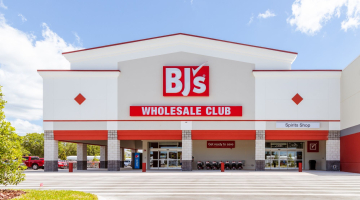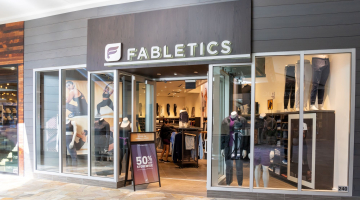
From left: Ann Sattin of American Express speaking with Jennie Weber of Best Buy at NRF Nexus 2023.
Five months into her role as chief marketing officer at Best Buy, Jennie Weber has bold ambitions. Spoiler alert: They don’t revolve around demographics.
During a session at NRF Nexus, the consumer electronics executive explored the use of customer data, experimentation and employee training to create individualized experiences and loyalty. Ann Sattin, vice president and general manager of retail, national client group, American Express, moderated the talk.
Tech and consumer electronics are needed across the population, Weber said.
Miss the event? Check out the recap and read the latest coverage on NRF Nexus that took place, July 10-12, 2023.
“We’re really looking at: What are their attitudes about technology? Are they passionate about it? Do they see technology as a badge or an identifier? What’s their affinity to Best Buy? How often are they shopping with us? Do they do certain behaviors like download our app or shop online and in-store? ... That’s where we see the greatest customer lifetime value — when we have more interaction.”
Weber, whose career spans more than 20 years in consumer marketing, strategy development and design thought leadership — including more than a decade at Best Buy — offered a high-level view of the consumer in retail, as well as how her company has shifted strategies to meet changing demands.
Key areas for her ambitions include personalization, storytelling and creating a marketing team that marketers want to be a part of.
She spoke, for example, about Best Buy’s new membership program, and the quest to create a sticky experience in which consumers “don’t even question that they’re going to buy their mobile phone accessory or their laptop or their TV at Best Buy.”
It comes from understanding what consumers really care about, she said. At Best Buy, they want to make sure they can get a great price. And they want to know someone with tech knowledge will be there to help when needed.
As for what those customers want in-store, she said, they’re probably there for one of two reasons: to interact with a tech expert or to see, touch and try out a product, rather than wanting to use digital tools on-site. Such insights, she said, have come from ongoing testing, iteration and learning, particularly in the Charlotte, N.C., market.
The learnings aren’t just about customers; they’re also about employees. Best Buy deploys similar tactics on both sides, including focus groups and councils. Employees need the right tools, assets, leadership and support to deliver the best experience to the customer. They’re also the closest to the customer, she noted, and a rich source of insight.
Browse NRF’s latest articles and research on consumer trends in retail.
Best Buy works toward teaching and coaching empathy, curiosity and true understanding of customer needs. That might play out, for example, in helping an associate learn the right questions to ask someone building out a home theater system.
Weber and Sattin also touched on figuring out the balance between physical spaces and digital. “Where it really makes sense for the consumer is … for the store to be a real aspect of their lives,” Weber said. Stores can bring an element of community and localization, delivering relevant, exciting and human experiences — experiences that retail might be “uniquely positioned to deliver.”


